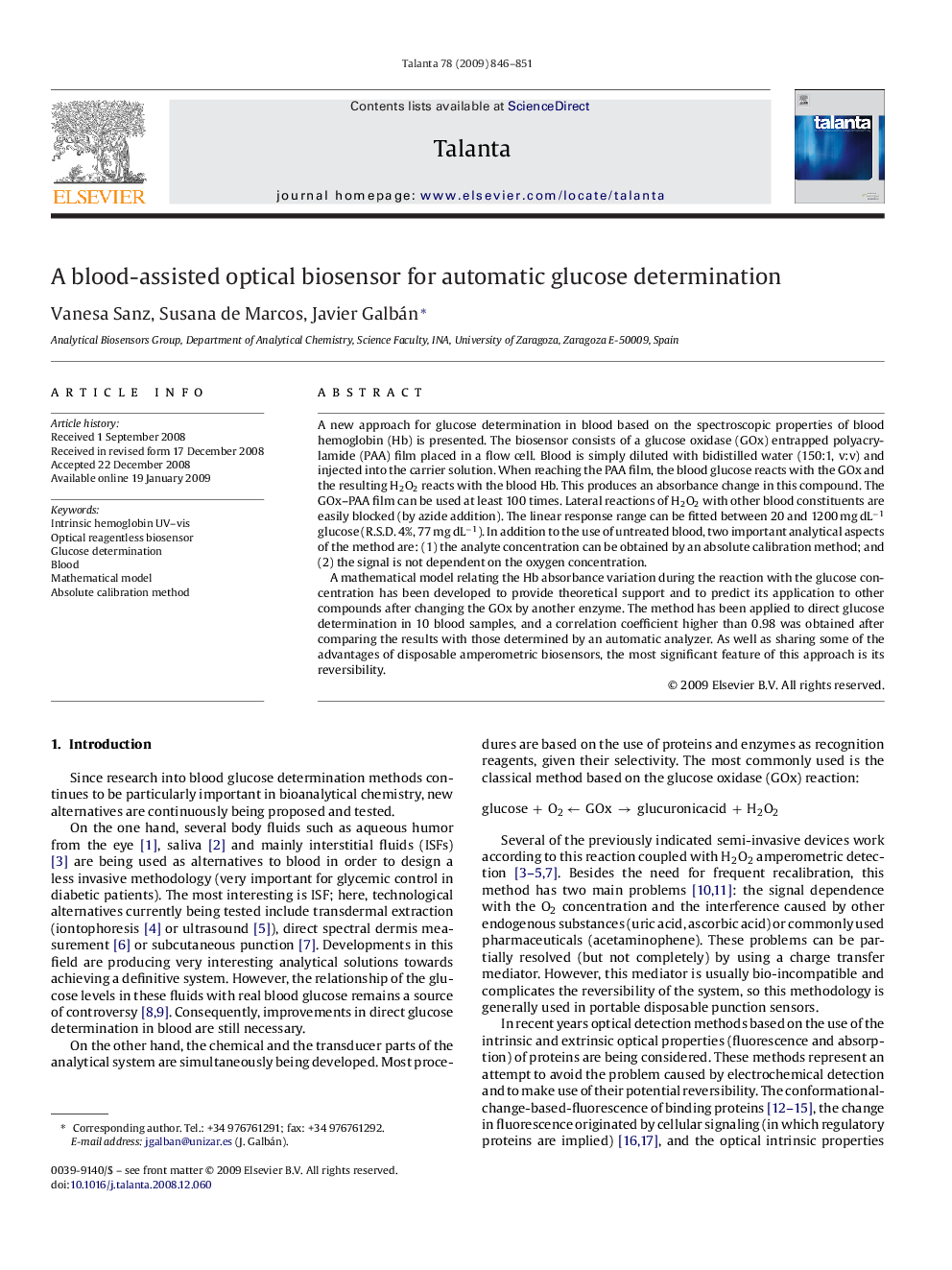| Article ID | Journal | Published Year | Pages | File Type |
|---|---|---|---|---|
| 1244913 | Talanta | 2009 | 6 Pages |
A new approach for glucose determination in blood based on the spectroscopic properties of blood hemoglobin (Hb) is presented. The biosensor consists of a glucose oxidase (GOx) entrapped polyacrylamide (PAA) film placed in a flow cell. Blood is simply diluted with bidistilled water (150:1, v:v) and injected into the carrier solution. When reaching the PAA film, the blood glucose reacts with the GOx and the resulting H2O2 reacts with the blood Hb. This produces an absorbance change in this compound. The GOx–PAA film can be used at least 100 times. Lateral reactions of H2O2 with other blood constituents are easily blocked (by azide addition). The linear response range can be fitted between 20 and 1200 mg dL−1 glucose (R.S.D. 4%, 77 mg dL−1). In addition to the use of untreated blood, two important analytical aspects of the method are: (1) the analyte concentration can be obtained by an absolute calibration method; and (2) the signal is not dependent on the oxygen concentration.A mathematical model relating the Hb absorbance variation during the reaction with the glucose concentration has been developed to provide theoretical support and to predict its application to other compounds after changing the GOx by another enzyme. The method has been applied to direct glucose determination in 10 blood samples, and a correlation coefficient higher than 0.98 was obtained after comparing the results with those determined by an automatic analyzer. As well as sharing some of the advantages of disposable amperometric biosensors, the most significant feature of this approach is its reversibility.
